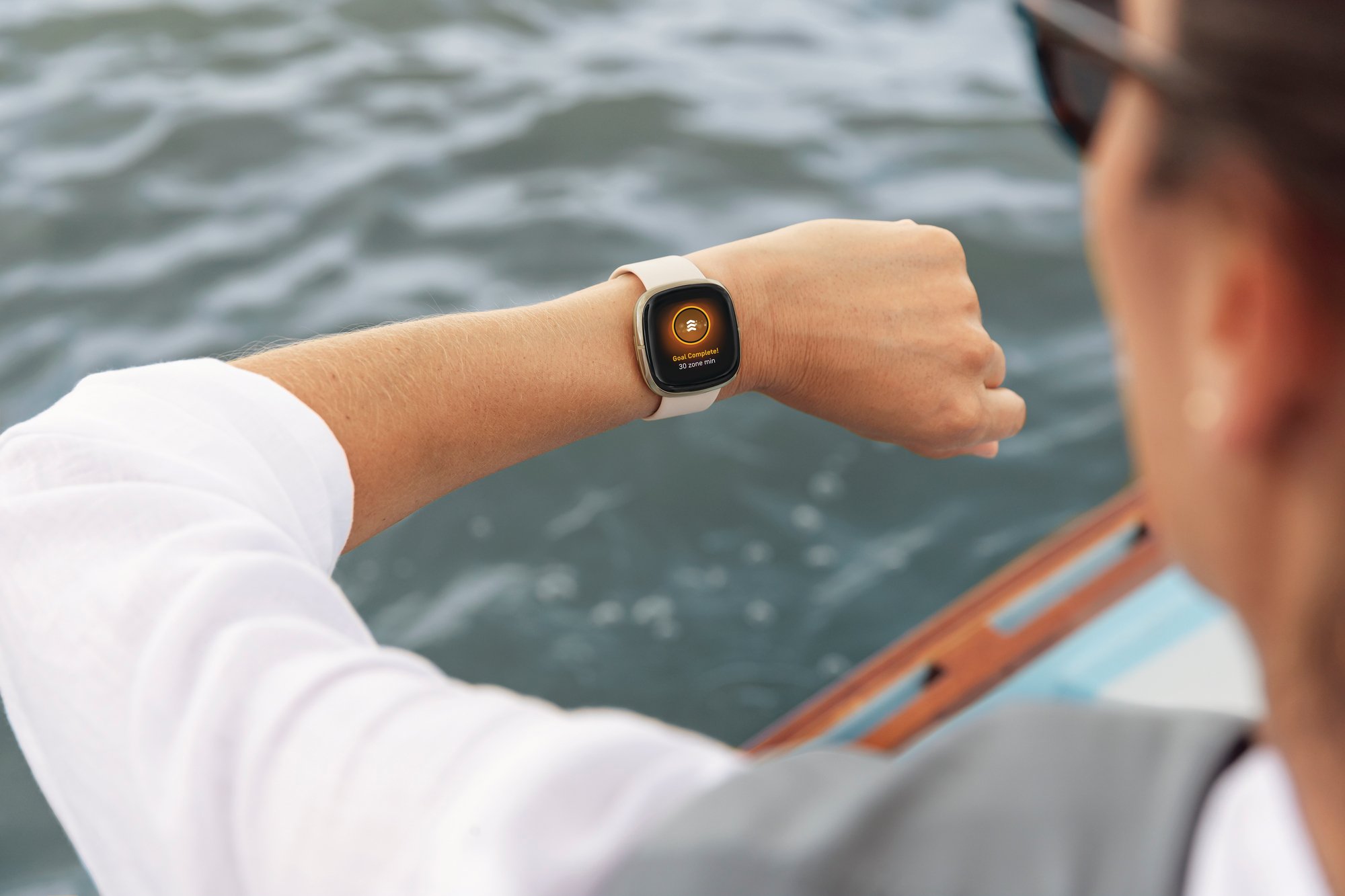Fitbit (NYSE: FIT) has been able to stay out of a price war in the wearables space. Over the last four years the company has deliberately expanded its product line enabling it to make 69% more revenue per device this year than in 2012.

Source: Author calculations and chart based on Fitbit's earning releases.
Over 98% of this gain is due to innovative products that command a higher price point -- along with associated accessories. But Fitbit has some other tricks up its sleeve to become more than just a consumer device company and continue to drive revenue higher. CEO and Co-Founder of Fitbit, James Park hinted at these in the last earnings call.
I think the only context I would give you is, we are starting to plant a lot of seeds, but while we might start to see some revenue streams there, they're going to be small initially, but hopefully they will have a pretty strong growth rate associated with them.
Some of these "seeds" are in software, premium subscriptions, corporate wellness programs and a new initiative Fitbit is calling digital health.
Revenue from software and premium subscriptions
Fitbit has recently purchased a promising software application called FitStar. For $39 per year or $7.99 per month you can get an interactive personal training app that is able to create workouts which adapt to users goals and fitness level. Fitbit bought the FitStar company in March 2015 and with the release of the Fitbit Blaze in January 2016, they have added this personal training capability directly into the device.
Premium subscriptions is another source of revenue that is software based. The premium subscription is $49.95 per year and offers additional insights with benchmarks against the Fitbit community, more detailed activity, food and sleep reports, and a 12-week personalized fitness plan.
Unfortunately, the revenue for subscription services isn't broken out quarterly, and as of the last annual report (at the end of 2015), it accounted for less than 1% of revenue.

Image source: Fitbit.
Corporate wellness programs
Another source of revenue growth for Fitbit is its corporate wellness programs, which it launched in 2010. Since then, Fitbit has been successful in partnering with 70 of the Fortune 500 companies and has 2.6 million Fitbit users connecting their data to Fitbit's corporate wellness platforms. While Fitbit doesn't release growth rates for its corporate wellness programs, they added 20 companies from the Fortune 500 list between October 2015 to October 2016.
Fitbit's corporate wellness programs seem like a win-win for both Fitbit and the companies that they partner with. Fitbit can sell more devices, and the companies have an opportunity to encourage their employees to be more active which has been shown to have positive health benefits -- potentially resulting in lower healthcare costs for the company.
Fitbit makes it easy for companies to sign on and it handles all of the e-commerce transactions, including employer contributions. When the employees receive their Fitbit, they are invited to enroll in their company's dashboard and can challenge their friends and colleagues to fitness competitions. The network effect really plays a part in the engagement and motivation of Fitbit users. Fitbit says that users with one or more friends are 27% more active and every friend you add to your network increases your activity level by about 750 steps per day.
While these wellness programs have allowed Fitbit to sell more devices, this revenue accounts for less than 10% of the overall revenue. The income generated from servicing these engagements accounted for less 1% of Fitbit's overall revenue as of the end of 2015. If Fitbit continues to grow its corporate wellness partnerships, this could become a more attractive offering to corporations and a bigger source of revenue for Fitbit.
Fitbit has upped its game recently with its corporate wellness programs and announced Fitbit Group Health in June 2016 that combines Corporate Wellness, Weight Management programs, Insurers and Clinical Research programs under one umbrella. If Fitbit can figure out how to monetize the close relationships they have with the over 1,300 corporate wellness customers and insurers, Fitbit Group Health could become more impactful to the overall revenue going forward. A recent announcement from Fitbit incorporates a "friends and family" discount as part of its corporate wellness program. This further builds Fitbit's network of users and could be a longer term catalyst for corporate and consumer sales.
Fitbit's digital health initiative has incredible potential
In August 2016, Fitbit created a new position of Vice President of Digital Health and announced a strategic hire, Adam Pellegrini, who previously worked at Walgreens, where he held the same title.
Woody Scal, Chief Business Officer of Fitbit, said this about hiring Adam Pellegrini: "...Fitbit can play a meaningful role in the digital health revolution, and Adam is the ideal person to lead our efforts."
What's exciting about the appointment of Pellegrini is that four months later Fitbit announced a partnership with Medtronic. This partnership could assist people with type two diabetes. The patient's activity data -- collected by their Fitbit -- is integrated with the Medtronic data on the patient's glucose levels, providing more detailed visibility than ever before for the patients and their caregivers.
While no financial details of the deal were announced, this is an exciting and potentially lucrative area for Fitbit to develop. Additionally, Fitbit recently announced that their tracking devices are being used in over 200 medical studies ranging "from breast cancer and diabetes to heart disease and surgical recovery". While Fitbit's digital health initiative is in its very early stages, this deal and the wide range of medical studies show the potential benefit Fitbit's devices can have on patient care, and could be a whole new source of revenue for the company.
Foolish bottom line
Based on Fitbit's current revenue streams, 98% of its revenue is hardware devices and accessories. Based on this fact, you could conclude Fitbit is solely a consumer hardware device company, but the company is trying to break out of this mold. Fitbit is aggressively pursuing alternative revenue sources with its corporate wellness programs, partnerships with insurers, weight management, and health research programs that could truly transform Fitbit into a digital health company.
Fitbit's CEO, James Park, answered a question during the company's most recent quarterly conference call about when the company's digital health initiatives will contribute to overall revenue.
I think there's different portions of the digital health market. Obviously, the place where we are seeing the earliest and initially greater traction is with employers, so we count that as digital health. The next area that we hope to see progress is more on the payer side, the insurance companies. And then the longer term is going to be integration with providers, such as hospital systems, just due to the nature of those entities. But, we have a lot of efforts under way tackling each of those three different areas, which we'll unlock over time.
Fitbit seems to be pretty secretive about its progress into the digital health space, but as a user and shareholder, I am excited about the possibilities to impact healthcare and grow the Fitbit business long term. Fitbit is certainly taking the long view and planting seeds that could grow this $2 billion consumer device company into a much bigger digital health company.





